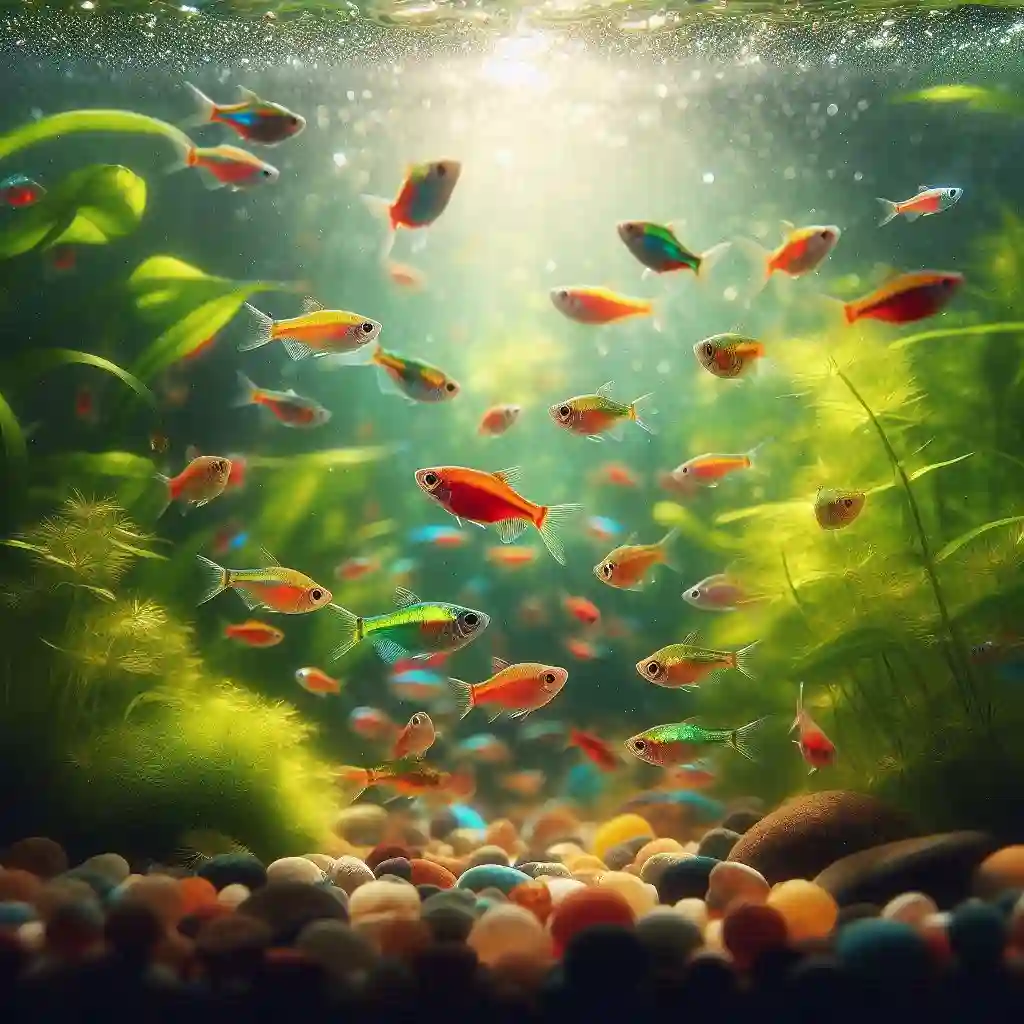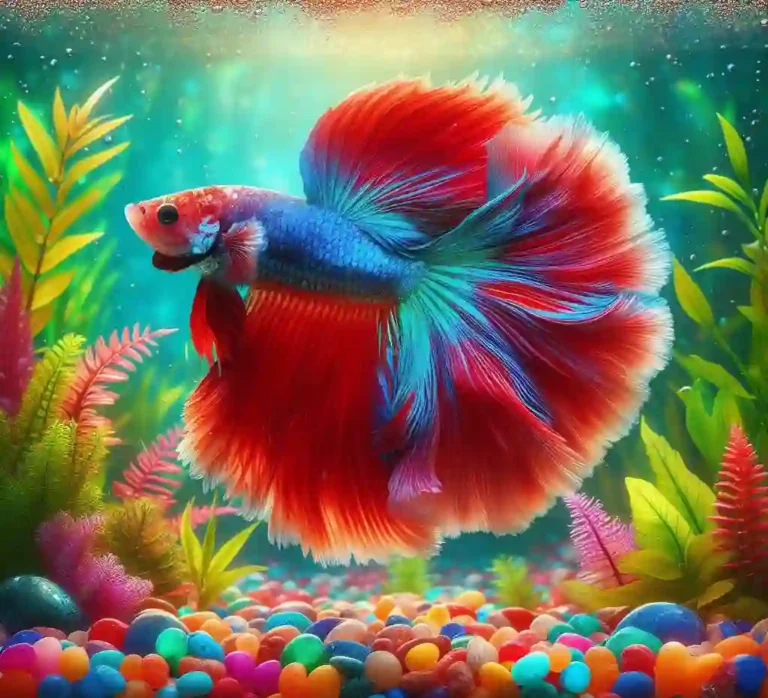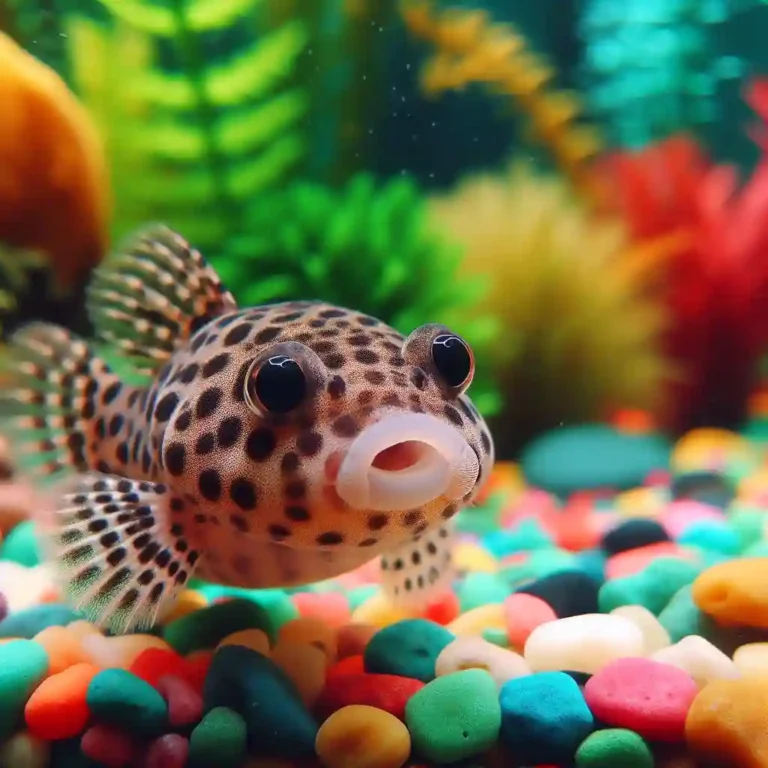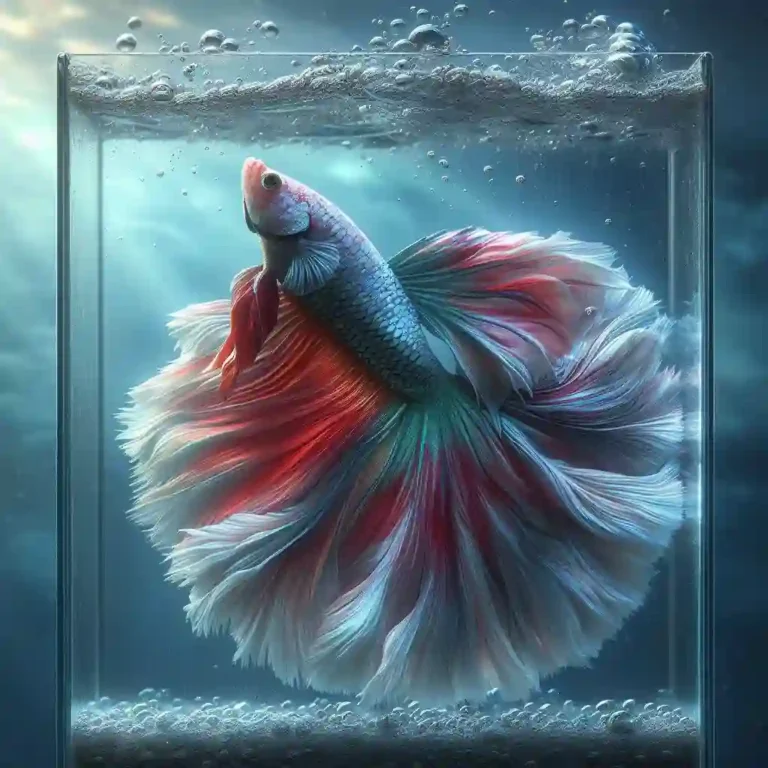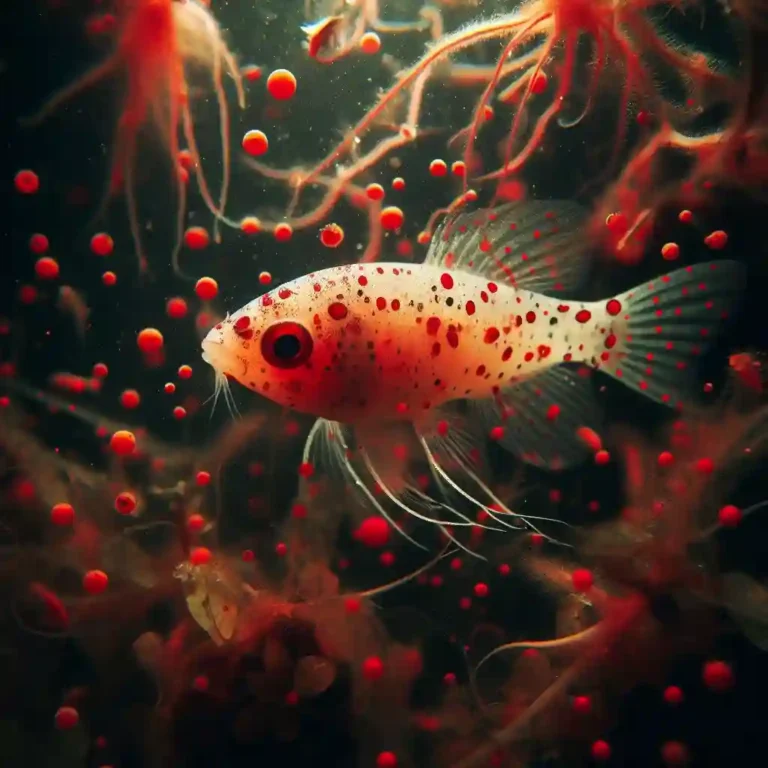Pregnant Ember Tetra: A Comprehensive Care Guide
Pregnant Ember Tetra: As an aquarium enthusiast, you’ve likely fallen in love with the mesmerizing beauty of the Ember Tetra. But have you ever wondered what it takes to care for these stunning fish when they’re expecting?
Caring for a pregnant Ember Tetra requires a deep understanding of their unique needs and requirements.
In this comprehensive guide, we’ll delve into the world of Ember Tetra pregnancy care, covering everything from housing and water conditions to diet and breeding.
Pregnant Ember Tetra: A Quick Guide
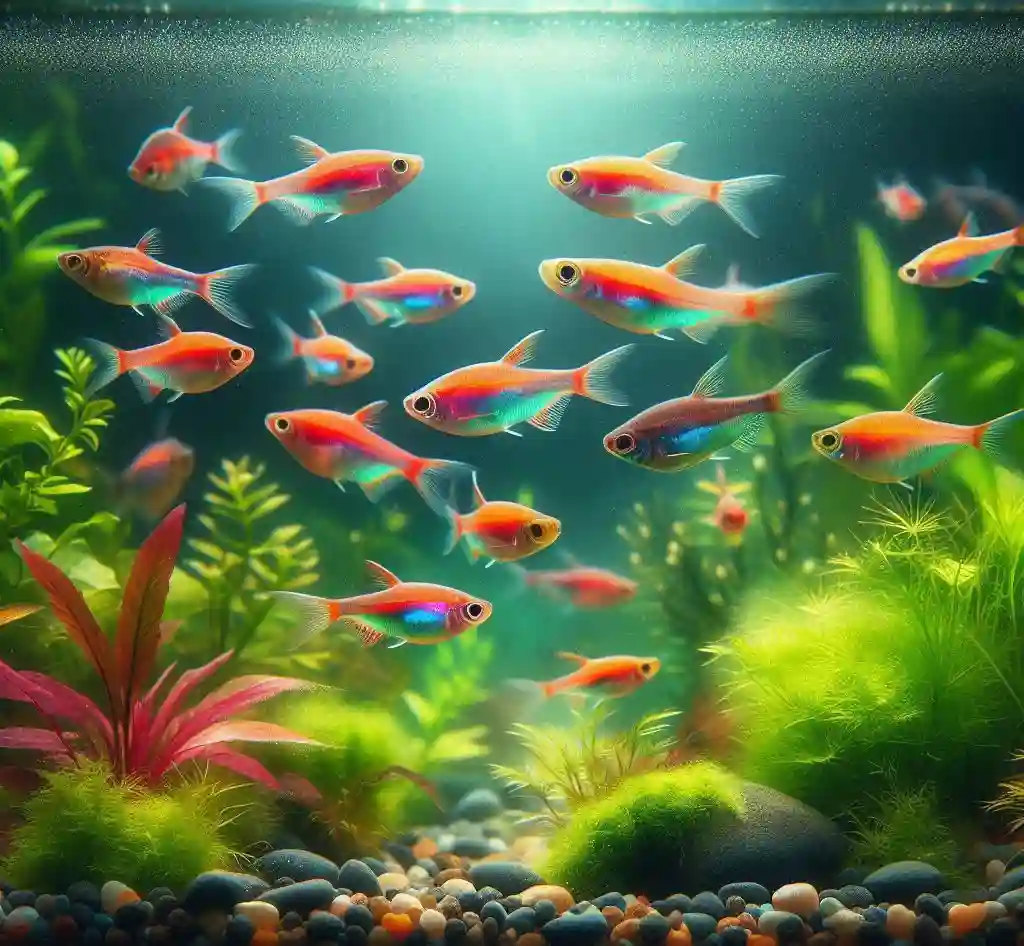
Housing:
- Provide a separate tank with a secure lid to prevent jumping and predation.
- Use a tank with a minimum capacity of 5 gallons.
- Add plants, rocks, and decorations to create a natural environment.
Water Conditions:
- Maintain a water temperature between 72°F (22°C) and 82°F (28°C).
- Monitor water quality and perform regular water changes (10-20% every week).
- Maintain a pH range of 6.5-7.5 and a hardness of 5-10 dGH.
Diet:
- Feed a balanced diet rich in protein, omega-3 fatty acids, and other essential nutrients.
- Provide a varied diet including live or frozen foods, such as brine shrimp or daphnia.
- Avoid overfeeding and monitor your fish’s appetite and behavior.
Monitoring:
- Monitor your fish’s behavior and physical condition daily.
- Look for signs of stress, illness, or discomfort, such as changes in appetite or behavior.
- Consult a veterinarian or a qualified fish expert if you notice any signs of illness or stress.
Breeding:
- Provide a separate breeding tank with a secure lid and a temperature range of 72°F (22°C) to 82°F (28°C).
- Use a breeding cone or a spawning grid to facilitate spawning.
- Monitor the breeding process and provide a safe and comfortable environment for the fry.
Fry Care:
- Transfer the fry to a separate tank with a secure lid and a temperature range of 72°F (22°C) to 82°F (28°C).
- Feed the fry a high-quality commercial fry food or a diet of live or frozen foods, such as brine shrimp or daphnia.
- Monitor the fry’s health and behavior daily and provide a safe and comfortable environment.
Recognizing the Signs: How to Identify a Pregnant Ember Tetra
Sign #1: Enlarged Belly
One of the most obvious signs of pregnancy in Ember Tetras is an enlarged belly. As the eggs develop, the female’s abdomen will begin to swell, becoming more rounded and pronounced. This is usually noticeable about 1-2 weeks into the pregnancy.
Sign #2: Darkening of the Belly
As the eggs mature, the belly of the pregnant Ember Tetra will start to darken, taking on a more grayish or brownish hue. This is due to the development of the eggs and the increased blood flow to the reproductive organs.
Sign #3: Changes in Behavior
Pregnant Ember Tetras often exhibit changes in behavior, such as:
- Reduced activity: Pregnant females may become less active, spending more time hiding or resting.
- Increased aggression: Some pregnant Ember Tetras may become more aggressive, defending their territory or food from other fish.
- Changes in appetite: Pregnant females may have a decreased appetite or show more interest in food.
Sign #4: Gravid Spot
Experienced breeders often look for the “gravid spot,” a dark patch that appears on the belly of the pregnant female, just behind the gills. This spot is caused by the developing eggs and is usually visible about 1-2 weeks before spawning.
Sign #5: Body Shape
As the pregnancy progresses, the female’s body shape will begin to change. The abdomen will become more rounded, and the fish may appear more “plump” or “bloated.”
Optimal Water Conditions: Creating a Healthy Environment for Your Pregnant Ember Tetra
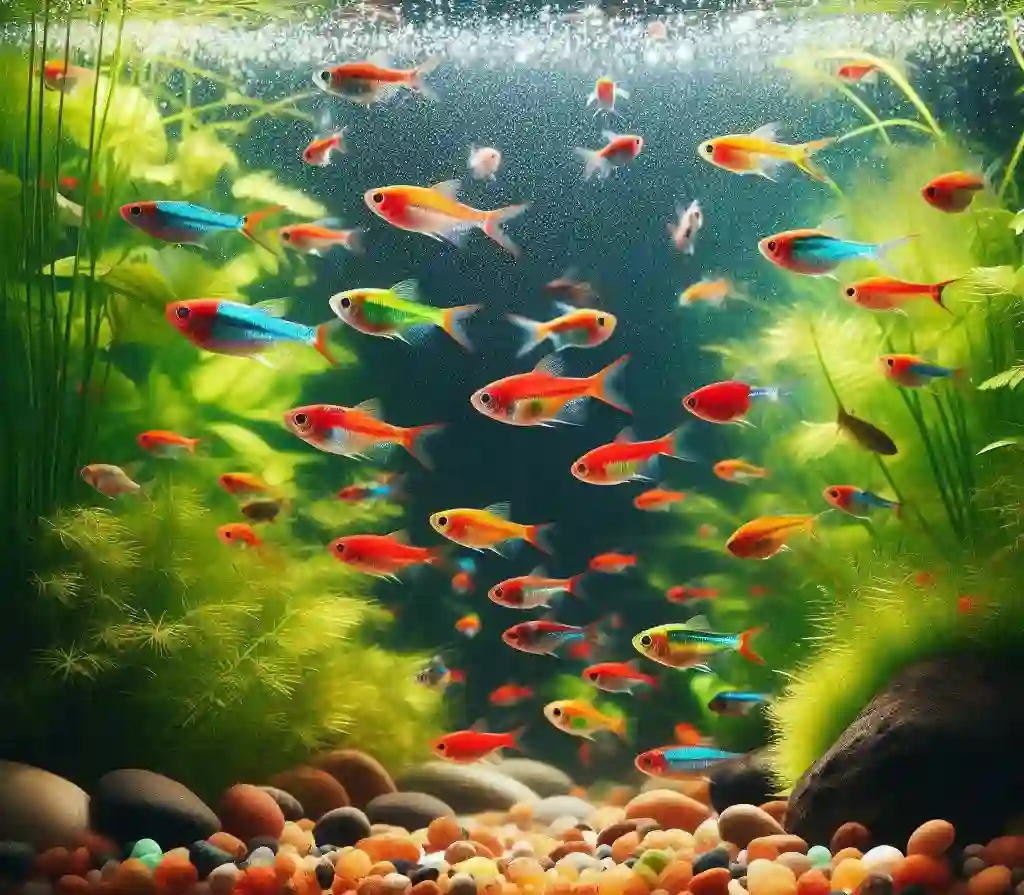
Water Temperature
Ember Tetras are native to the warm, tropical waters of South America, and as such, they thrive in temperatures between 72°F (22°C) and 82°F (28°C). For pregnant females, it’s essential to maintain a stable temperature between 76°F (24°C) and 80°F (27°C) to promote healthy egg development.
pH Levels
Ember Tetras prefer slightly acidic to neutral water, with a pH range of 6.5 to 7.5. A stable pH is crucial for the health of your pregnant female, as fluctuations can cause stress and negatively impact egg development.
Water Hardness
Ember Tetras are adapted to soft, slightly acidic water, with a water hardness of 1-5 dGH (degrees of General Hardness). Maintaining a water hardness of 2-3 dGH is ideal for pregnant females, as it helps to reduce stress and promote healthy egg development.
Water Changes
Regular water changes are essential for maintaining optimal water conditions. Aim to change 10-20% of the tank water weekly, using a gravel vacuum to remove debris and waste. This will help to maintain stable water parameters and reduce the risk of disease.
Water Quality
Monitor water quality parameters, such as ammonia, nitrite, and nitrate levels, to ensure they remain within safe ranges. Perform regular water tests to detect any issues before they become problematic.
Tips for Creating a Healthy Environment
- Provide plenty of hiding places, such as plants or decorations, to reduce stress and promote feelings of security.
- Maintain a peaceful community by avoiding aggressive tankmates and providing a spacious environment.
- Avoid overcrowding, as this can lead to stress and disease.
- Consider adding a spawning medium, such as a breeding grid or a spawning cone, to provide a safe and comfortable environment for your pregnant female.
Nutrition for a Healthy Pregnancy: Dietary Needs for Pregnant Ember Tetras
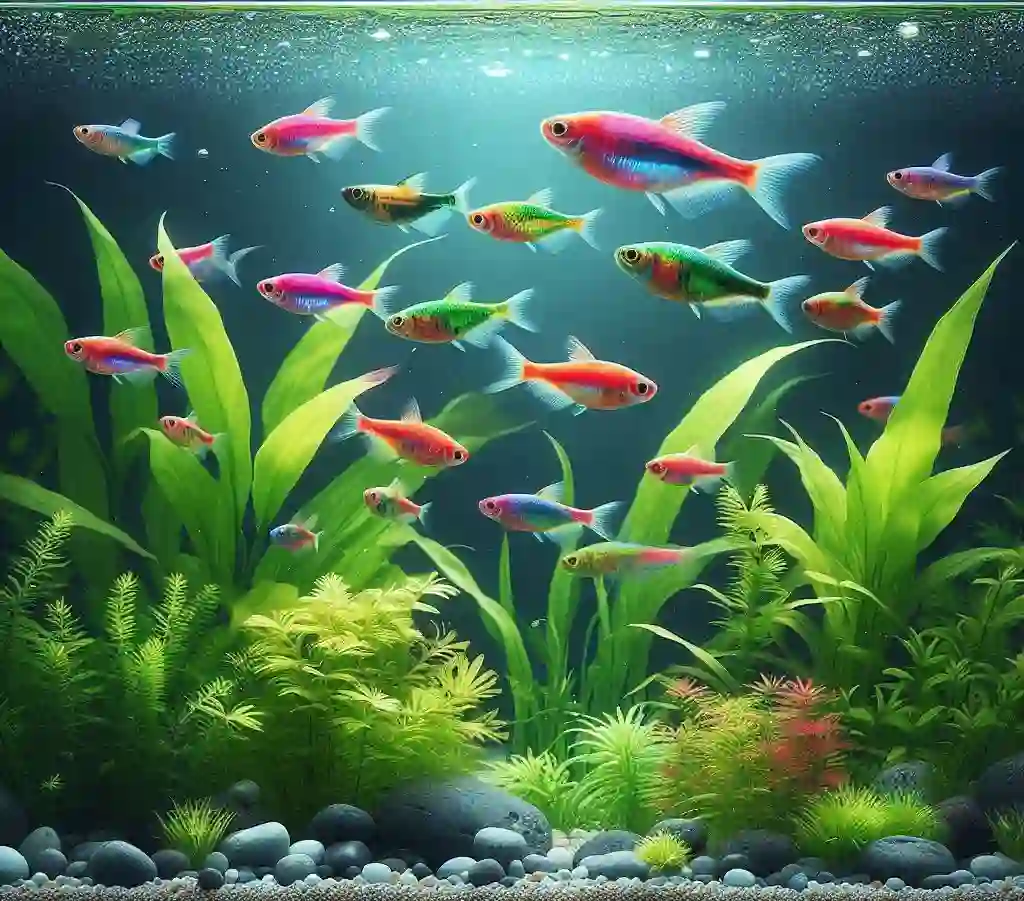
Protein-Rich Foods
Pregnant Ember Tetras require a diet rich in protein to support the development of eggs and fry. Feed your pregnant female a varied diet that includes:
- High-quality commercial flake or pellet foods that contain 30-40% protein
- Live or frozen foods such as brine shrimp, bloodworms, or daphnia
- Protein-rich supplements like spirulina or krill
Omega-3 Fatty Acids
Omega-3 fatty acids are essential for the development of healthy eggs and fry. Include foods rich in omega-3s, such as:
- Fish oil supplements
- Algae-based foods
- Omega-3 enriched commercial foods
Vitamins and Minerals
Pregnant Ember Tetras require a range of vitamins and minerals to support egg development and overall health. Ensure your diet includes:
- Vitamin A-rich foods like spirulina or algae-based foods
- Vitamin C-rich foods like citrus-based foods or vitamin C supplements
- Calcium-rich foods like crushed coral or calcium supplements
Feeding Frequency and Quantity
Pregnant Ember Tetras have increased energy needs to support egg development. Feed your pregnant female:
- 2-3 times a day, in small quantities, to prevent overfeeding
- Only as much as they can consume within 1-2 minutes
- Avoid overfeeding, as this can lead to digestive issues and poor water quality
Tips for Meeting Dietary Needs
- Rotate foods regularly to ensure a varied diet and prevent nutrient deficiencies
- Avoid feeding your pregnant female foods high in fillers, by-products, or low-quality ingredients
- Consider adding a vitamin or mineral supplement specifically formulated for breeding fish
The Importance of Hiding Places: Providing a Stress-Free Environment for Your Pregnant Ember Tetra
Why Hiding Places are Essential
Pregnant Ember Tetras, like all fish, have a natural instinct to hide and feel secure. Hiding places provide a sense of safety and comfort, reducing stress and anxiety. Without adequate hiding places, your pregnant female may become stressed, leading to:
- Reduced fertility
- Poor egg development
- Increased aggression
- Decreased appetite
- Weakened immune system
Types of Hiding Places
There are many types of hiding places you can provide for your pregnant Ember Tetra, including:
- Live plants: Plants like Java moss, Anacharis, or Water Wisteria provide excellent hiding places and help maintain good water quality.
- Decorations: Add decorations like rocks, driftwood, or artificial plants to create hiding places and visual interest.
- Caves: Add caves or overhangs to provide secluded areas for your pregnant female to hide.
- Breeding boxes: Use breeding boxes or spawning cones to provide a safe and secure environment for your pregnant female.
Tips for Creating a Comfortable Environment
- Provide a variety of hiding places to cater to your pregnant female’s individual preferences.
- Place hiding places in areas with moderate to low water flow to reduce stress.
- Avoid overcrowding the tank, as this can lead to stress and competition for hiding places.
- Consider adding a “safe zone” or a designated area with plenty of hiding places for your pregnant female to retreat to.
Separating the Female: Why and How to Isolate a Pregnant Ember Tetra
Why Separate the Female?
Separating the pregnant female from the rest of the school is crucial for several reasons:
- Reduced stress: Separating the female reduces stress and harassment from other fish, allowing her to focus on egg development and spawning.
- Improved water quality: By isolating the female, you can maintain better water quality and reduce the risk of disease and waterborne pathogens.
- Increased spawning success: Separating the female increases the chances of successful spawning and reduces the risk of egg predation.
How to Separate the Female
Separating the female requires careful planning and attention to detail. Here are some steps to follow:
- Choose a suitable container: Select a separate container or breeding tank that is large enough to provide a comfortable environment for the female. A minimum capacity of 5 gallons is recommended.
- Acclimate the female: Acclimate the female to the new environment by gradually introducing her to the separate container over a period of 1-2 hours.
- Monitor water parameters: Monitor water parameters, such as pH, ammonia, and nitrite levels, to ensure they remain stable and within acceptable ranges.
- Provide hiding places: Add hiding places, such as plants or decorations, to provide the female with a sense of security and comfort.
- Maintain good water quality: Perform regular water changes (10-20% every week) to maintain good water quality and reduce the risk of disease.
Tips for Successful Separation
- Monitor the female’s health: Regularly monitor the female’s health and behavior, and be prepared to intervene if you notice any signs of stress or illness.
- Maintain a consistent environment: Maintain a consistent environment, including water temperature, pH, and water hardness, to reduce stress and promote spawning.
- Avoid overcrowding: Avoid overcrowding the separate container, as this can lead to stress and reduce the chances of successful spawning.
Common Health Issues: Monitoring Your Pregnant Ember Tetra for Complications
Common Health Issues
- Fungal infections: Fungal infections can occur in pregnant Ember Tetras, especially if they are stressed or have weakened immune systems. Look for signs of fungal infections, such as white or cotton-like growths on the fish’s body.
- Bacterial infections: Bacterial infections can also affect pregnant Ember Tetras, causing symptoms like labored breathing, lethargy, and loss of appetite.
- Parasites: Parasites like ich, velvet, or anchor worms can infect pregnant Ember Tetras, causing stress and discomfort.
- Nutritional deficiencies: Pregnant Ember Tetras require a balanced diet rich in protein, omega-3 fatty acids, and other essential nutrients. Deficiencies in these nutrients can lead to health issues, such as poor egg development or weakened immune systems.
Monitoring for Complications
To ensure the health and well-being of your pregnant Ember Tetra, it’s essential to monitor her for signs of complications. Here are some tips:
- Observe your fish regularly: Regularly observe your pregnant Ember Tetra for signs of illness or stress, such as labored breathing, lethargy, or changes in appetite.
- Monitor water quality: Regularly test the water for ammonia, nitrite, and nitrate levels to ensure they remain within safe ranges.
- Maintain good water quality: Perform regular water changes (10-20% every week) to maintain good water quality and reduce the risk of disease.
- Provide a balanced diet: Ensure your pregnant Ember Tetra receives a balanced diet rich in protein, omega-3 fatty acids, and other essential nutrients.
The Waiting Game: How Long Does a Pregnant Ember Tetra Take to Give Birth?
Typical Gestation Period
The typical gestation period for Ember Tetras is around 24-48 hours, although it can vary depending on factors such as water temperature, diet, and overall health. It’s essential to monitor your pregnant female’s behavior and physical changes to determine when she’s ready to spawn.
Signs of Imminent Spawning
As the spawning date approaches, you may notice the following signs in your pregnant Ember Tetra:
- Increased activity: Your pregnant female may become more active and restless as the spawning date approaches.
- Changes in appetite: Your pregnant female may experience changes in appetite, such as increased or decreased feeding, as the spawning date approaches.
- Physical changes: Your pregnant female may exhibit physical changes, such as a swollen belly or changes in skin color, as the spawning date approaches.
What to Expect During the Waiting Period
During the waiting period, it’s essential to maintain a stress-free environment and provide your pregnant female with a comfortable and secure environment. Here are some tips to keep in mind:
- Maintain good water quality: Regularly test the water for ammonia, nitrite, and nitrate levels to ensure they remain within safe ranges.
- Provide a balanced diet: Ensure your pregnant female receives a balanced diet rich in protein, omega-3 fatty acids, and other essential nutrients.
- Monitor water temperature: Maintain a stable water temperature between 72°F (22°C) and 82°F (28°C) to promote healthy egg development.
What to Do When Your Pregnant Ember Tetra Gives Birth
When your pregnant Ember Tetra gives birth, it’s essential to provide a safe and comfortable environment for the fry to develop. Here are some tips to keep in mind:
- Provide a separate tank: Transfer the fry to a separate tank with a secure lid to prevent them from jumping out or being eaten by other fish.
- Maintain good water quality: Regularly test the water for ammonia, nitrite, and nitrate levels to ensure they remain within safe ranges.
- Feed the fry: Feed the fry a high-quality commercial fry food or a diet of live or frozen foods, such as brine shrimp or daphnia.
After the Fry: Caring for Your Pregnant Ember Tetra After Spawning
Providing a Safe Environment
After spawning, your pregnant Ember Tetra may require a safe and comfortable environment to recover. Here are some tips to ensure a safe and healthy environment:
- Provide a separate tank: Transfer your pregnant Ember Tetra to a separate tank with a secure lid to prevent her from jumping out or being eaten by other fish.
- Maintain good water quality: Regularly test the water for ammonia, nitrite, and nitrate levels to ensure they remain within safe ranges.
- Monitor water temperature: Maintain a stable water temperature between 72°F (22°C) and 82°F (28°C) to promote healthy recovery.
Feeding Your Pregnant Ember Tetra
After spawning, your pregnant Ember Tetra may require a specialized diet to support her recovery. Here are some tips to ensure a healthy and nutritious diet:
- Provide a balanced diet: Feed your pregnant Ember Tetra a balanced diet rich in protein, omega-3 fatty acids, and other essential nutrients.
- Avoid overfeeding: Avoid overfeeding your pregnant Ember Tetra, as this can lead to digestive issues and poor water quality.
- Monitor her appetite: Monitor your pregnant Ember Tetra’s appetite and adjust her diet accordingly.
Monitoring Her Health
After spawning, it’s essential to monitor your pregnant Ember Tetra’s health closely to ensure a healthy recovery. Here are some tips to monitor her health:
- Monitor her behavior: Monitor your pregnant Ember Tetra’s behavior and watch for signs of stress, illness, or discomfort.
- Monitor her appetite: Monitor your pregnant Ember Tetra’s appetite and adjust her diet accordingly.
- Monitor her physical condition: Monitor your pregnant Ember Tetra’s physical condition and watch for signs of illness or injury.
FAQs
Q: How long does it take for an Ember Tetra to become pregnant?
A: The gestation period for Ember Tetras is typically around 24-48 hours.
Q: How do I know if my Ember Tetra is pregnant?
A: You can check for signs of pregnancy, such as a swollen belly or changes in behavior.
Q: How do I care for a pregnant Ember Tetra?
A: Provide a safe and comfortable environment with a balanced diet and regular water changes.
Q: How do I know when my Ember Tetra is ready to spawn?
A: Look for signs of imminent spawning, such as changes in behavior or physical changes.
Q: How do I care for the fry after spawning?
A: Provide a separate tank with a secure lid and a balanced diet. Monitor water quality and temperature.
Q: How do I prevent stress in my pregnant Ember Tetra?
A: Provide a stress-free environment with a balanced diet and regular water changes.
Q: How do I know if my Ember Tetra is experiencing stress?
A: Look for signs of stress, such as changes in behavior or physical changes.
Q: How do I prevent disease in my pregnant Ember Tetra?
A: Provide a clean and healthy environment with regular water changes and a balanced diet.
Q: How do I know if my Ember Tetra has a disease?
A: Look for signs of illness, such as changes in behavior or physical changes.
Q: How do I treat a sick Ember Tetra?
A: Consult a veterinarian or a qualified fish expert for guidance on treating a sick Ember Tetra.
Q: How do I prevent parasites in my pregnant Ember Tetra?
A: Provide a clean and healthy environment with regular water changes and a balanced diet.
Q: How do I know if my Ember Tetra has parasites?
A: Look for signs of parasites, such as changes in behavior or physical changes.

Hello, I’m Aria Cooper, the heart and soul behind Swimmy Buddies. As a devoted fish aficionado, I share my aquatic adventures and expertise to inspire your own underwater explorations. 🐠🌊

